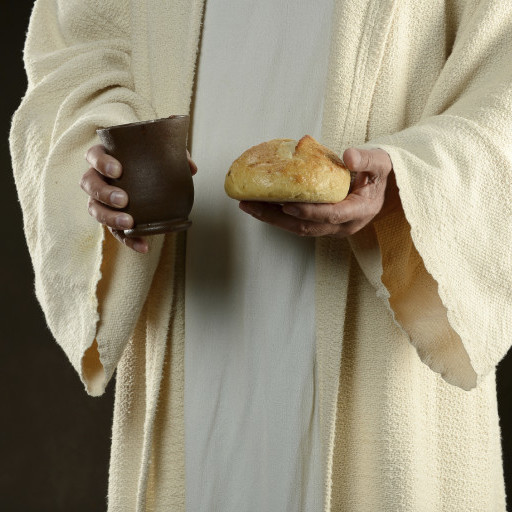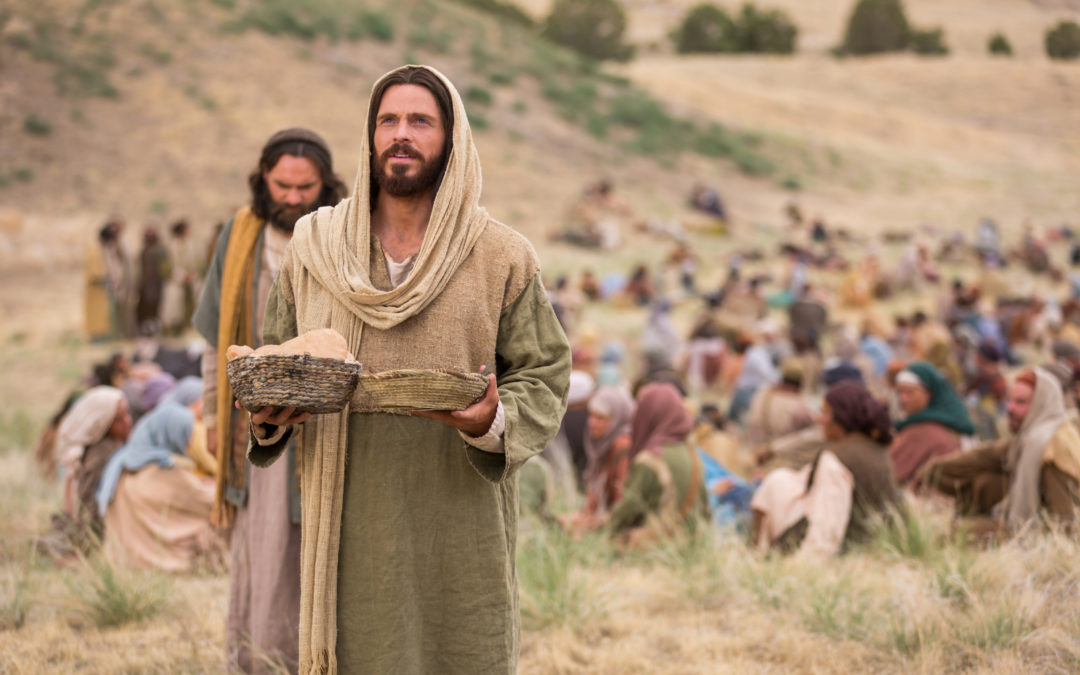Bless seems like a simple word in the scriptures and the sacrament prayers. The bread and water (formerly wine) are blessed by ordained priests and Elders in The Church of Jesus Christ of Latter-day Saints. Somehow, the blessing makes the bread and water more than what they were before, more special, more dedicated to the purpose of remembering Christ and what He did for us and what we can do for Him and His children on the earth.
We think of Jesus turning water to wine at the wedding at the request of his mother, Mary. The water becomes wine after being blessed by Jesus, the wedding is blessed by it being better than the early wine given at the feast. People are made happy by the choiceness of the wine. Mary and all future disciples are made happy by figuratively being made holy like the wine, after living common unbelieving lives like common water before being touched by the Savior.
We think of the Shew bread or Presence bread being made holy after being baked in the outer courtyard of the Temple and being placed in the ancient Israelite tabernacles and temples opposite the Menorah with the Incense table between them. It literally sat in the Presence of the Lord for a week, being replaced with new bread every Sabbath. Twelve loaves were stacked in two piles with Frankincense incense cups being placed on top of the bread. The baking of the bread and placing it in the temple on a golden table made it holy and for an offering to the Lord, a sweet smell. Later the discarded holy bread was to be eaten by the priests but only in the temple.
The act of God blessing something to make it useful to us, His humble children, starts at the beginning. The Spirit of God brooded over the waters of creation and blessed them. The waters brought forth life and every creature of the sea, and rain for every plant of the field. The four rivers from the mountain of the Garden of Eden flowed down and watered the earth outside the garden. Man is born of water and blood. Manna was blessed by God and Manna blessed his children in the wilderness for 40 years. Moses blessed the bitter poison waters by throwing a tree into them, thereby blessing God’s chosen people. Elisha blessed the waters that were bitter to make them sweet.
The Hebrew word, Baruch, means blessing in English. But in Hebrew it has more meanings of value to us. The Aaronic Priesthood Blessing found in Numbers 6 says:
24 The LORD bless thee, and keep thee:
25 The LORD make his face shine upon thee, and be gracious unto thee:
26 The LORD lift up his countenance upon thee, and give thee peace.
Barakh is the Hebrew word for bless and has several forms which mean kneel, knee, respect, offer a gift. The expanded meaning in Ancient Hebrew of the original word for bless “Barakh” is “to do or give something of value to another,” usually in a kneeling respectful attitude.[i] When God blesses us by offering us the emblems of the Lord’s Supper, in effect, He is offering Himself as a supreme sacrifice for our sins and the breaking of the bands of death both spiritual and temporal. He is offering something of infinite, eternal value. When we bless “barakh” God, we offer our only significant gift, our whole lives, our whole self in serving Him and His children, our brothers and sisters in the whole human family of Adam.
Looking at other uses of the word bless in the Bible, we see it used to wish happiness, make successful, temporal prosperity, give peace, set apart as holy as in God blessing the Sabbath, consecrate by prayer as in Jesus blessing the bread and fishes, to praise, to glorify, to pronounce or prophesy future blessings and to multiply as in Abraham being blessed with prosterity.[ii]
“God’s promise to Abraham again serves as a foundation for blessings.”[iii] The Abrahamic Covenant is best expressed in the following scripture:
Abraham 2:9-11
9 And I will make of thee a great nation, and I will bless thee above measure, and make thy name great among all nations, and thou shalt be a blessing unto thy seed after thee, that in their hands they shall bear this ministry and Priesthood unto all nations;
10 And I will bless them through thy name; for as many as receive this Gospel shall be called after thy name, and shall be accounted thy seed, and shall rise up and bless thee, as their father;
11 And I will bless them that bless thee, and curse them that curse thee; and in thee (that is, in thy Priesthood) and in thy seed (that is, thy Priesthood), for I give unto thee a promise that this right shall continue in thee, and in thy seed after thee (that is to say, the literal seed, or the seed of the body) shall all the families of the earth be blessed, even with the blessings of the Gospel, which are the blessings of salvation, even of life eternal.[iv]
Although it is God who blesses the emblems of the sacrament, the Lord’s Supper, we approach Him to return blessings to Him through taking it. Since kneeling is the action of the Hebrew word to bless, it is appropriate that in the original instructions to the Saints in these Latter-days, the congregation was to kneel with the priest blessing the bread and water: “he shall kneel with the church and call upon the Father in solemn prayer.”[v]
Kneeling is so important to the meaning of the Hebrew word and action of blessing, a short review of scriptures showing kneeling in worshipping and blessing God and mankind will follow.
Reviewing Google images for Abraham at the altar on Mount Moriah shows him kneeling in a significant number of them. The painters felt that offering a sacrifice to the Lord at an altar would best be depicted by kneeling. Even though we sit now to take the Lord’s Supper, we are so humble for His offering, that we are kneeling in humility in our hearts with our heads bowed in prayer. Likewise, many pictures of Adam and Eve at an altar show them kneeling.
Esther is often depicted as kneeling before the King seeking to bless her people at the expense of possibly her own life. In this way, she is a symbol of Christ kneeling in the Garden of Gethsemane praying for us, taking upon himself our sins, offering himself a ransom for our sins.
Joseph and Mary are depicted as kneeling at the manger of Jesus with the cattle nearby. So too are many a concerned parent kneeling at the crib of their baby, trying to bless their disturbed baby with their peaceful presence and rest. The visit of the Magi with their gifts of gold, Frankincense and Myrrh is painted with them kneeling to offer the gifts to the Christ child.
Doubting Thomas is often depicted as kneeling when he feels the wounds in Christ’s hands, feet and side. Kneeling is the ultimate token of worship, honor and respect, but often carries a commitment to to do whatever our Lord and King desires. The knights of the round table kneel, as well as their modern counterparts before the King or Queen when they are knighted. There is a commitment of service for life in the kneeling and knighting. So too are we making a covenant of service for life when we take the blessed emblems of the bread and water/wine. Thereby we bless God in return for His bounteous tender mercies and blessings bestowed on us as symbolized in the Lord’s Supper.
[i] http://www.ancient-hebrew.org/language_aaronic.html
[ii] https://av1611.com/kjbp/kjv-dictionary/bless.html
[iii]https://www.biblestudytools.com/dictionary/blessing/
[iv] Abraham 2:9-11, Pearl of Great Price, Intellectual Reserve Inc, 1981, 2013 published by The Church of Jesus Christ of Latter-day Saints.
[v] D&C 2076-79

